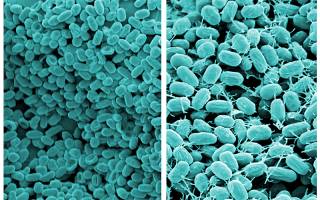Richard Beckett and Dr Sean Nair
NOTBAD is an interdisciplinary research project that brings together a team with expertise in architecture, microbiology and antimicrobial resistance. The project is exploring a novel approach towards preventing the spread of antimicrobial resistance (AMR) in the built environment by reversing the notion of sterilisation and encouraging the growth of other benign and/or beneficial microbes that serve to outcompete AMR microbes. |
|---|
The medical community understands that not all microbes are bad and that certain microbes play a beneficial role within the body in relation to our health and immune development. It is evident that overprescribing antibiotics can lead to the killing of benign and/or beneficial microbes within the body removing competition and thereby allowing antimicrobial resistant microbes to proliferate or colonise the body.
Analogically, these principles are true of microbes within buildings – the so called built environment microbiome. However, to date, a similar shift in opinion has not occurred amongst architects and designers where a preference for cleanliness still drives a 'kill-all' mentality towards the presence of microbes in buildings. This project is investigating an alternative, pro-microbial design paradigm for a living architecture that purposely grows benign bacteria within the building walls and surfaces that serve to prevent the spread of antimicrobial resistant pathogens via mechanisms of bacterial competition.
 Close
Close




